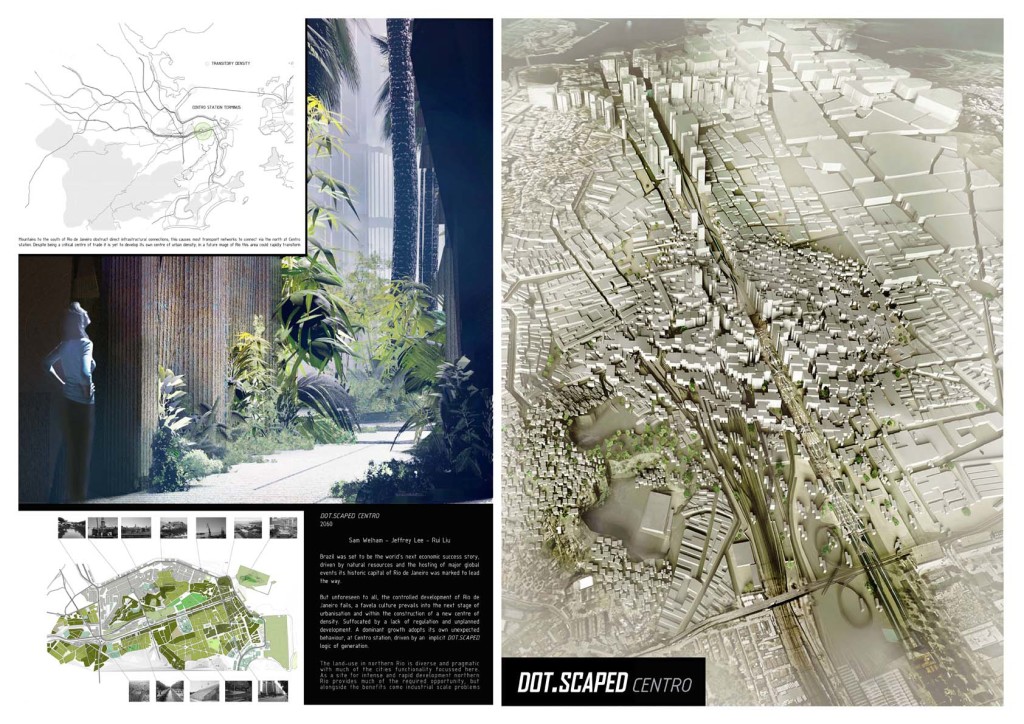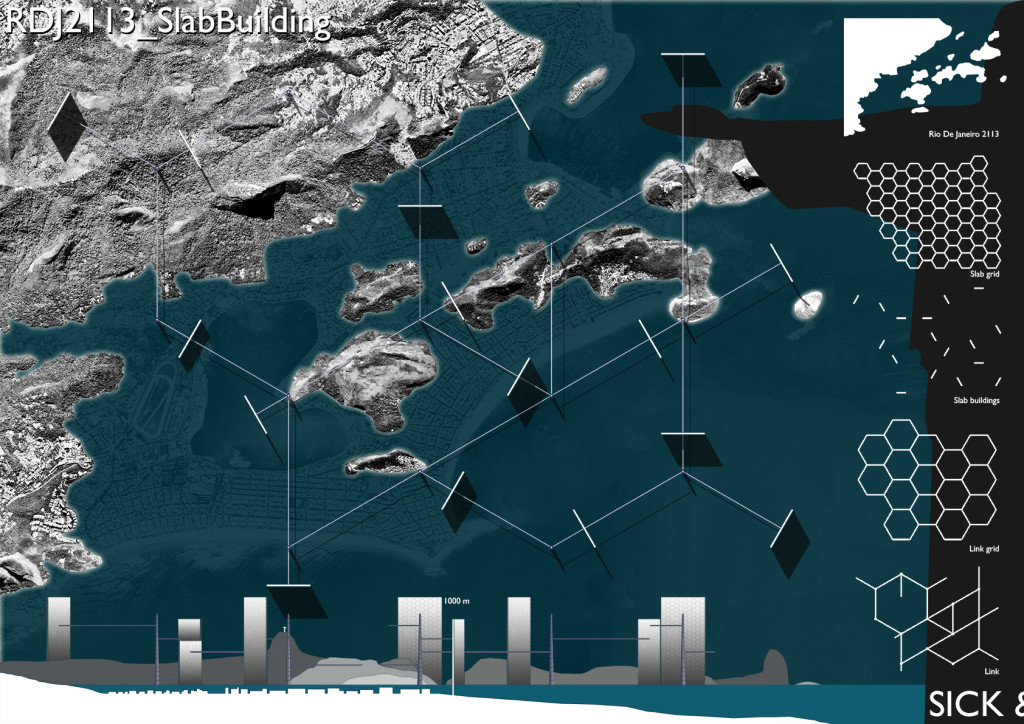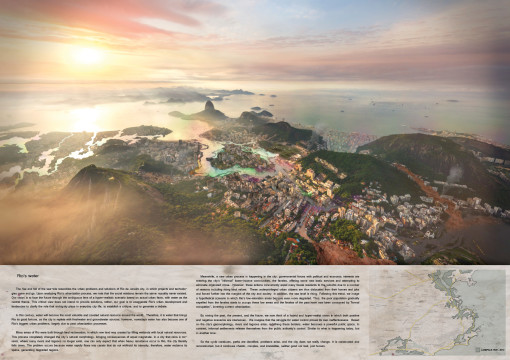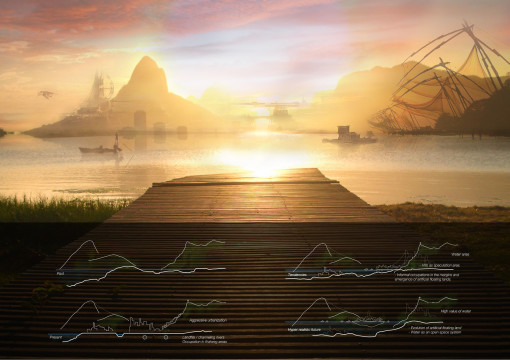Info:
Title: Rio’s water - Code: 496e8Contest: Rio de Janeiro / 2013
By: Marcos Blanco - Arthur Naressi - Camila Cordeiro
Views: 4122 Likes: 4
Votes:
Alejandro Zaera-Polo 9 Jeffrey Inaba 4 Jeroen Koolhaas 6 Hernan Diaz Alonso 1 Cristiano Toraldo di Francia 8 Pedro Rivera 75.8
Rio’s water
The rise and fall of the sea-tide resembles the urban problems and solutions of Rio de Janeiro city, in which projects and technologies come and go. Upon analyzing Rio´s urbanization process, we note that the social relations remain the same: equality never existed. Our vision is to face the future through the ambiguous lens of a hyper-realistic scenario based on actual urban facts and tendencies, with water as the central theme. In this century, water will become the most valuable and coveted natural resource around the world. Therefore, it is water that brings Rio its good fortune, as the city is replete with freshwater and groundwater sources; however, nowadays water has also become one of Rio’s biggest urban problems, largely due to past urbanization processes. Many areas of Rio were built through land reclamation, in which new land was created by filling wetlands with local natural resources. This process completely changed the city´s natural morphology, bringing consequences of equal magnitude. In a city that rains in torrents, where many rivers and lagoons no longer exist, one can only expect that when heavy rainstorms occur in Rio, the city literally falls down. The problem occurs because water rapidly flows into canals that do not withhold its intensity; therefore, water reclaims its space, generating degraded regions. Meanwhile, a new urban process in happening in the city: governmental forces with political and economic interests are entering the city’s “informal” lower-income communities, the favelas, offering some new basic services and attempting to eliminate organized crime. However, these actions concurrently expel many favela residents to the suburbs due to a number of reasons including rising land values. These underprivileged urban citizens are thus dislocated from their homes and jobs and forced further into the margins of the city and society. In addition, the sea level is rising. Following this trend, we image a hypothetical scenario in which Rio’s low-elevation areas become even more degraded. Thus, the poor population gradually expelled from the favelas starts to occupy these low areas and the favelas of the past have now been consumed by “formal occupation”, inverting current urbanization. By mixing the past, the present, and the future, we now think of a hybrid and hyper-realist vision in which both positive and negative scenarios are interwoven. We imagine that the struggle for water control proves its own ineffectiveness. Based on the city’s geomorphology, rivers and lagoons arise; redefining these borders, water becomes a powerful public space. In contrast, informal settlements release themselves from the public authority’s control. Similar to what is happening today, but in another time. So the cycle continues, paths are identified, problems arise, and the city does not really change. It is constructed and reconstructed, but it continues chaotic, complex, and irresistible, neither good nor bad, just human.








